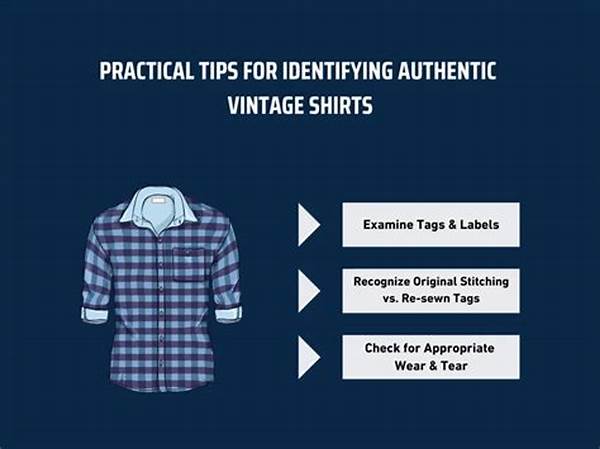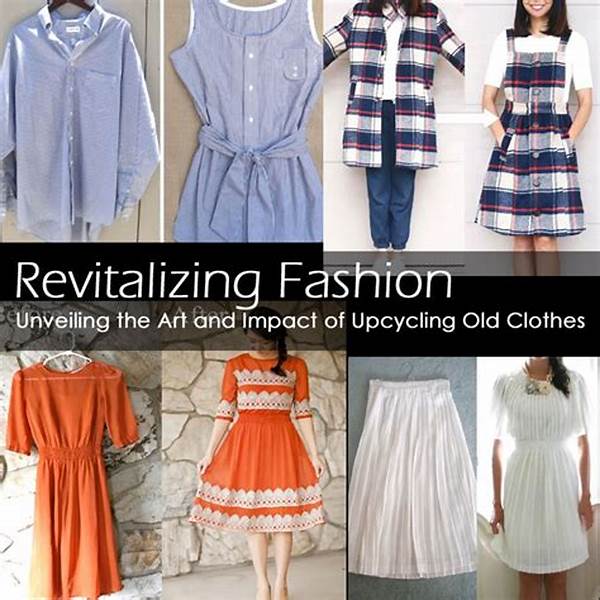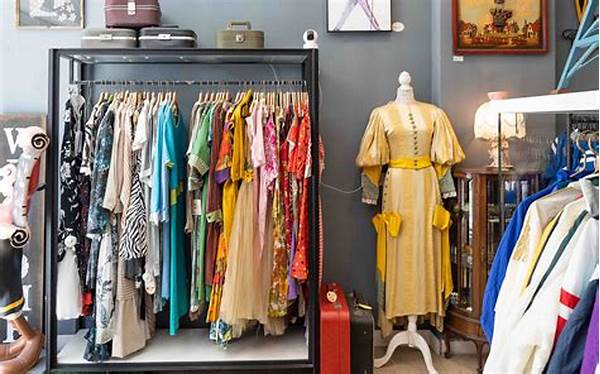In the world of fashion, few things are as thrilling as the discovery of a genuine vintage piece. The charm of stepping into garments that tell a story of bygone eras is unmatched. However, the surge in demand for vintage fashion has led to an influx of reproductions, making the task of identifying authentic vintage clothing pieces challenging yet crucial. As a discerning fashion enthusiast, you owe it to yourself to distinguish true vintage treasures from imposters. Let’s delve into the art of pinpointing genuine vintage clothing.
Read Now : Modest Fashion Layering Techniques
Why Authentic Vintage Matters
Identifying authentic vintage clothing pieces is more than just a hobby; it’s a commitment to preserving history and embracing sustainable fashion. Original vintage pieces encapsulate the essence of their era—reflecting the cultural, social, and artistic nuances of the time. Authentic pieces often possess a craftsmanship and quality that are rare in today’s fast fashion world. By investing in true vintage clothing, you’re not only acquiring a unique style but also supporting an eco-friendly practice by recycling fashion. The thrill of uncovering an original is akin to finding a small piece of fashion history, a piece that holds tales of its previous owners and has stood the test of time. More so, genuine vintage clothing provides an exclusivity and individuality that allows you to express your personal style uniquely.
Key Indicators of Authentic Vintage
1. Labels and Tags: Identifying authentic vintage clothing pieces often begins with examining the labels. Older pieces typically feature union labels or tags with vintage logos.
2. Material and Construction: Vintage clothes are often made from materials that feel and weigh differently compared to modern counterparts, emphasizing sturdier stitching and craftsmanship.
3. Zippers and Fastenings: Metal zippers, snap fasteners, and unique buttons are common in true vintage items, unlike the plastic fasteners found in replicas.
4. Patterns and Prints: Recognizing unique patterns and prints that speak of a specific era helps in identifying authentic vintage clothing pieces, as many modern reproductions fail to capture this authenticity.
5. Wear and Tear: An authentic piece will display signs of age, such as fading and minor wear, which contribute to its character and historical value.
Understanding Vintage Eras
A keen understanding of fashion history is pivotal for identifying authentic vintage clothing pieces. Each era from the 1920s to the 1980s has distinct features and characteristics. The flapper dresses of the 1920s, for example, marked a revolution in women’s fashion with their loose fit and intricate beadwork. Conversely, the tailored suits of the 1940s broadcasted a more structured silhouette reflecting wartime practicality. Equipping yourself with knowledge of these distinctive era-specific styles enhances your ability to spot genuine pieces. Moreover, expertise in vintage fashion enables collectors and enthusiasts to navigate the market confidently, ensuring that their investments are authentic and valuable.
Read Now : Chic Modest Layering Combinations
The Hunt for Authenticity
The quest for identifying authentic vintage clothing pieces is as much about patience and diligence as it is about passion. This pursuit often involves sifting through flea markets, thrift stores, and estate sales. With each turn of a clothes rack, the possibility of finding a hidden gem that speaks to your aesthetic and ethical values looms large. Every detail, from the fabric texture to the garments’ finishing touches, requires careful scrutiny. Opting for authentic vintage over fast fashion means adding timeless and meaningful pieces to your wardrobe. It also means embracing a more sustainable and conscientious approach to fashion consumption, a decision that positively impacts the environment and champions individuality.
Building a Sustainable Wardrobe
Identifying authentic vintage clothing pieces is not just about style; it’s about making informed choices that support sustainability. Fast fashion contributes significantly to environmental degradation. By turning to vintage, you are actively reducing the carbon footprint associated with clothing production. Vintage garments are typically made to last—a testament to the superior craftsmanship of yesteryears. They help break the cycle of disposable fashion while offering durability and timeless appeal. Thus, identifying and investing in authentic vintage pieces is not just a fashion statement; it’s a declaration for a greener planet. Vintage fashion merges style and sustainability impeccably, offering a unique answer to the challenges of modern fashion consumption.
The Significance of Provenance
Provenance plays a crucial role when it comes to identifying authentic vintage clothing pieces. Knowing the history of an item not only enhances its value but also enriches your wardrobe with stories. Provenance may be about a garment’s previous famed owner or its featured appearance in iconic moments. This historical depth transforms a simple outfit into a conversation piece that resonates with the echoes of time. With each authentic piece you add to your collection, you preserve a slice of history, contributing to its narrative and ensuring its legacy endures through your distinctive style.
Preserving Vintage Fashion
The importance of identifying authentic vintage clothing pieces lies in the preservation of fashion heritage. By choosing and caring for true vintage, you play a part in safeguarding a segment of history that might otherwise disappear. Proper maintenance of vintage clothing extends their lifespan, allowing future generations the privilege of experiencing these unique fashion artifacts. Furthermore, being able to accurately identify and maintain vintage clothing ensures that their beauty and historical significance are never lost. Embrace the nuanced journey of vintage fashion; it promises not only aesthetic enrichment but also a respectful nod to sustainable and mindful consumption.




